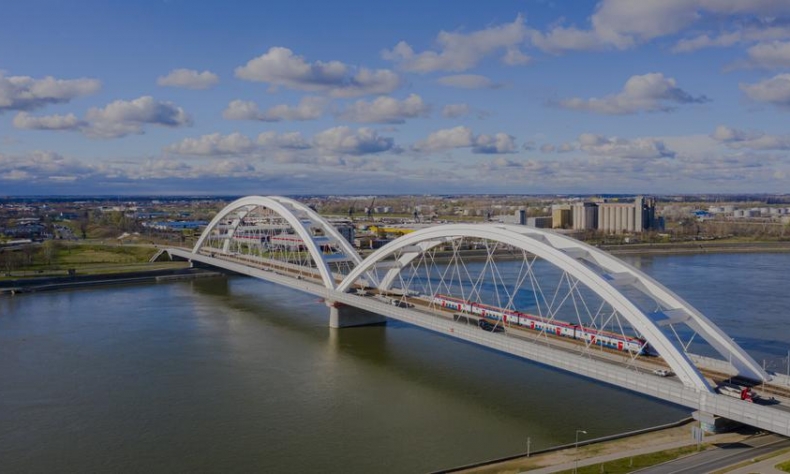Stronger China-Serbia Ironclad Bond

By leveraging their respective strengths and fostering mutual trust and cooperation, Serbia and China can pave the way for a mutually beneficial and prosperous future partnership.
Political cooperation between Serbia and China is at a very high level. Diplomatic relations were established in the middle of the 20th century, and from that time they have been developing on the ascending path only. Main reason for that is sincere dedication of both countries to developing their relations on the basis of mutual respect and respect for the basic principles of international law – territorially integrity, sovereignty and non-interference in internal affairs of the sovereign country.
When it comes to the economic relations between Serbia and China, since Serbia joined the Belt and Road Initiative (BRI) and the mechanism of cooperation between China and Central and Eastern Europe, they improved significantly. Serbia’s involvement in the BRI represents a significant aspect of its cooperation with China. The BRI is a global infrastructure development initiative proposed by China that aims to enhance connectivity and trade between China and other countries, primarily through the construction of infrastructure projects such as roads, railways, ports, and energy facilities.
Serbia’s participation in the BRI has led to various infrastructure projects being implemented with Chinese investment and involvement. One of the flagship projects is the Belgrade-Budapest railway, which is part of the broader China-Europe freight railway network. This railway aims to improve transportation links between China and Europe, facilitating the movement of goods and boosting trade.
In addition to infrastructure projects, Serbia and China have also strengthened their economic ties through increased trade and investment. China has become one of Serbia’s major trading partners, with bilateral trade steadily growing over the years. Chinese companies have invested in various sectors in Serbia, including energy, manufacturing, and telecommunications.
Serbia’s cooperation with China within the framework of the BRI is seen as a means to attract investment, stimulate economic development, and enhance connectivity with other regions. Overall, Serbia’s participation in the BRI reflects its efforts to leverage its geographical position and strengthen its ties with China, with the aim of promoting economic growth and development.
By leveraging their respective strengths and fostering mutual trust and cooperation, Serbia and China can pave the way for a mutually beneficial and prosperous future partnership. Embracing shared values of friendship, equality, and mutual respect can further deepen their strategic relationship and contribute to peace, stability, and prosperity in the region and beyond.

From that point of view, special significance has the Free Trade Agreement (FTA) signed during the third Belt and Road Forum for International Cooperation held in Beijing in October 2023. This agreement signals a promising step towards strengthening economic partnership and greater trade integration which can promote joint growth and cooperation between China, Serbia and their regional partners.
The FTA has enormous potential, but it also represents a homework assignment for the entire Government and the Serbian Chamber of Commerce, in order to implement it as best as possible, because it is not easy to appear on a large market. The FTA with China will be important for other investors as well because Serbia is in a position to build key infrastructure, which is important for investments.
At this point, it is necessary to address the critiques often heard from the West regarding the different investment approaches in Serbia. There is no doubt, and that can be justified by numerous examples, that the EU, when offers help, asks for conditions, which are often impossible, while China does not ask for it.
Even when speaking out of the frames of the FTA, both countries can deepen their trade ties by diversifying their economic exchanges beyond traditional sectors. Exploring new avenues such as e-commerce, technology transfer, and innovation cooperation can foster long-term economic benefits for both Serbia and China.
Embracing sustainable development practices and green technologies can address environmental challenges and promote ecological balance. Serbia and China can collaborate on initiatives such as renewable energy projects, environmental protection measures, and sustainable urban development to build a greener future.
The just concluded visit of the Chinese President Xi Jinping to Serbia also opens up new perspectives for cooperation. Namely, during the two-day visit, ironclad friendship between two counties has been confirmed and even raised to new level by signing a joint statement on the building of a China-Serbia community with a shared future in the new era, an upgrade of relations from the comprehensive strategic partnership established in 2016. In other words, Serbia has become the first European country to build with China a community with a shared future, which speaks volumes about the strategic, special and high-level China-Serbia relations. Knowing that Serbia was the first in this part of Europe when it signed the Comprehensive Strategic Partnership Agreement with China in 2016 it is easy to conclude that new chapter in bilateral relations of two countries has just begun.
The author is the deputy director at the Institute of International Politics and Economics in Belgrade, Serbia.
 Facebook
Facebook
 Twitter
Twitter
 Linkedin
Linkedin
 Google +
Google +










